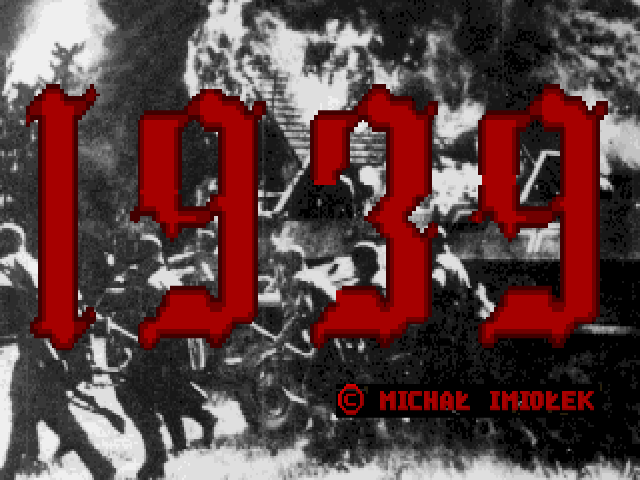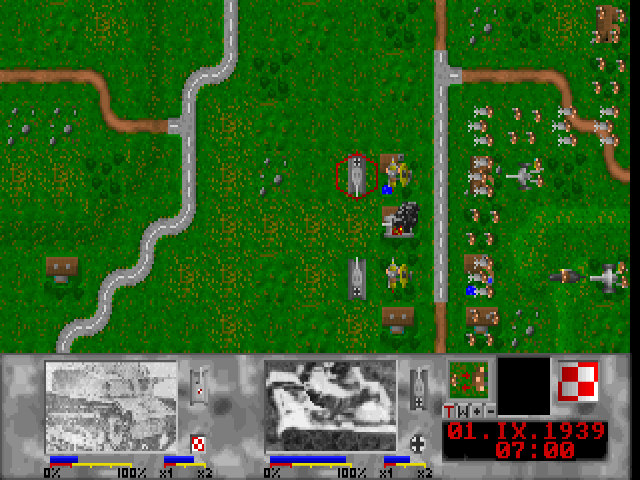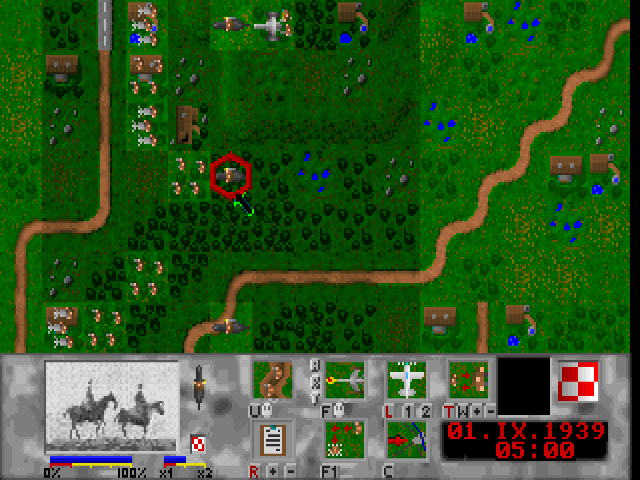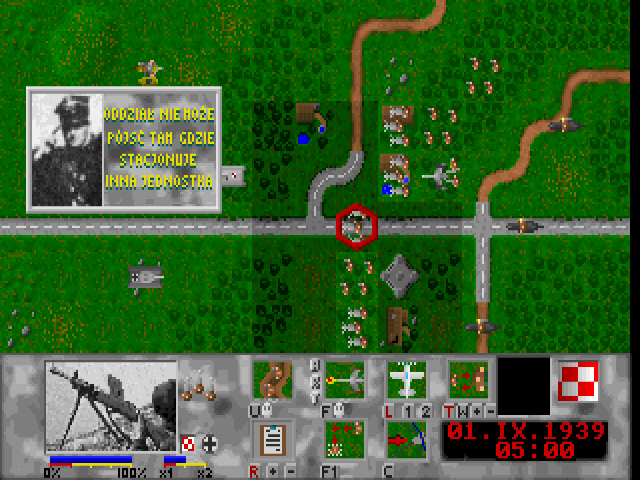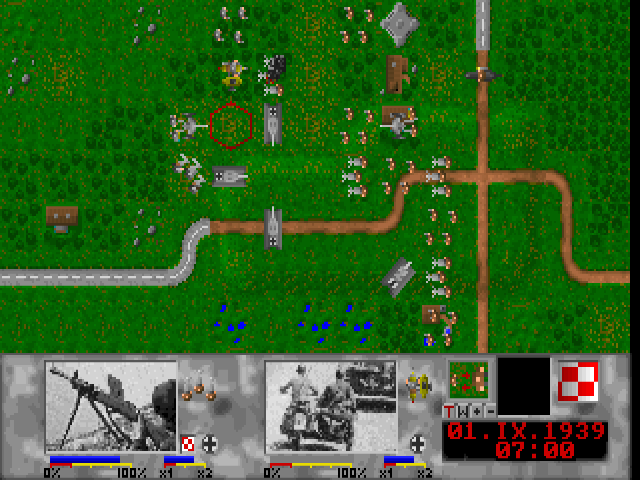This is a snapshot of this object as it looked in the past. | Go to the most recent version
translation missing: en.flash.savingtranslation missing: en.flash.errorMichał ImiołekQmYDzQWiD3BQ8C2w33Sswch3P6RmdWa3FSFcFdgvwY7KNq5dtRrX5B7z4Mr1z4N6e7huE3CUZx35
QmYDzQWiD3BQ8C2w33Sswch3P6RmdWa3FSFcFdgvwY7KNq5dtRrX5B7z4Mr1z4N6e7huE3CUZx35
Summary
DOS Turn-Based Strategy game from Michał Imiołek from 1997.
Authors
- Michał Imiołek
Publisher
USER
Released
1997
1939 is a turn-based wargame that covers the invasion of Poland at the start of World War II. You can control either the Polish Army or Wehrmacht forces across a dozen scenarios based on historical battles. As a wargame, 1939 does not have particularly complex rules, but the controls are a bit clumsy and counter-intuitive. Even the main menu, which has several items, gives you no indication of where you currently are (you first select your side, then choose is you want to have sound effects and use the mouse), so you can only know that by pressing the arrow keys to see which options will change (press Enter to confirm each selection). The game itself plays in a fairly standard way: issue orders to units, end turn to see part of the battle play out. However, it seems as if the interface was originally written for keyboard only, and mouse control was added as an afterthought. To order units around, you need to either drag the mouse to lay out the path for them, or use the arrow keys on the keyboard, which is more accurate and preferable. You can press F1 to preview where your units will end up after carrying out the orders that you gave them. But to actually end the turn, you need to press Enter. At the start of a new turn you'll receive battle reports, which are viewed by pressing the R key, and cycling through them is done by pressing the plus and minus keys on the keyboard. 1939 is entirely in the Polish language. Only the first two scenarios are available in the demo version, and you can only play on the Polish side. There is no way to save or load your game during a battle, but you can exit a scenario at any time by pressing Ctrl+Q.
Description by MrFlibble
Related
ResourcesHelp
This section tracks other objects or external resources.
The external resources, such as tarballs or Git repositories, are then available as part of the object. Their files can be considered local to the object and usable in scripts or as part of a build process.
For resources that are only to be used as part of the build or runtime of the object, it is best to describe those local to those sections.
RunHelp
This section tracks information useful to describing how to run this object.
Resources
Command
1939D.BAT
Run Environment
dosx86
JavaScript must be enabled.
There was an error retrieving this content.
The content could not be found.
JavaScript must be enabled.
There was an error retrieving this content.
The content could not be found.
JavaScript must be enabled.
There was an error retrieving this content.
The content could not be found.
